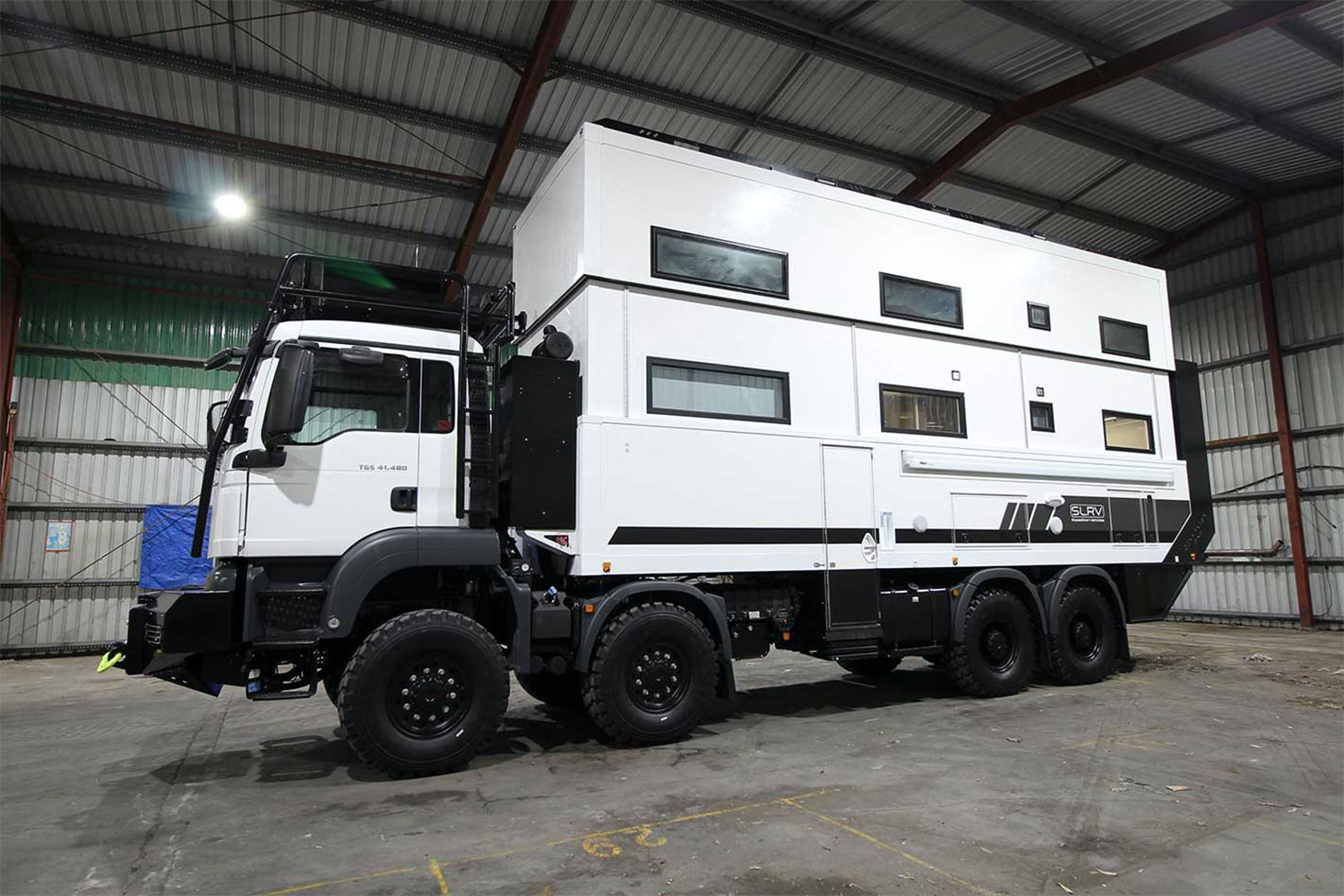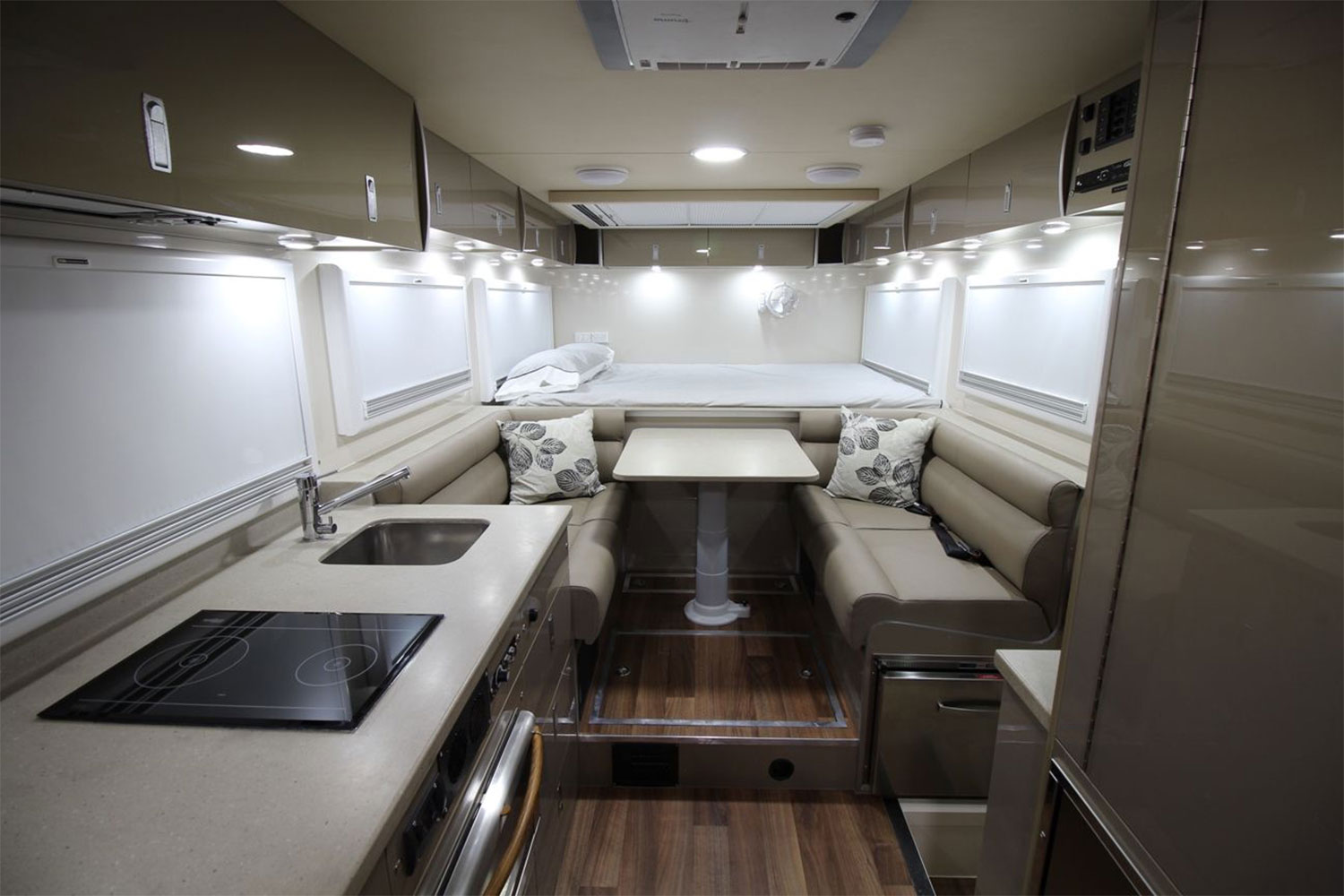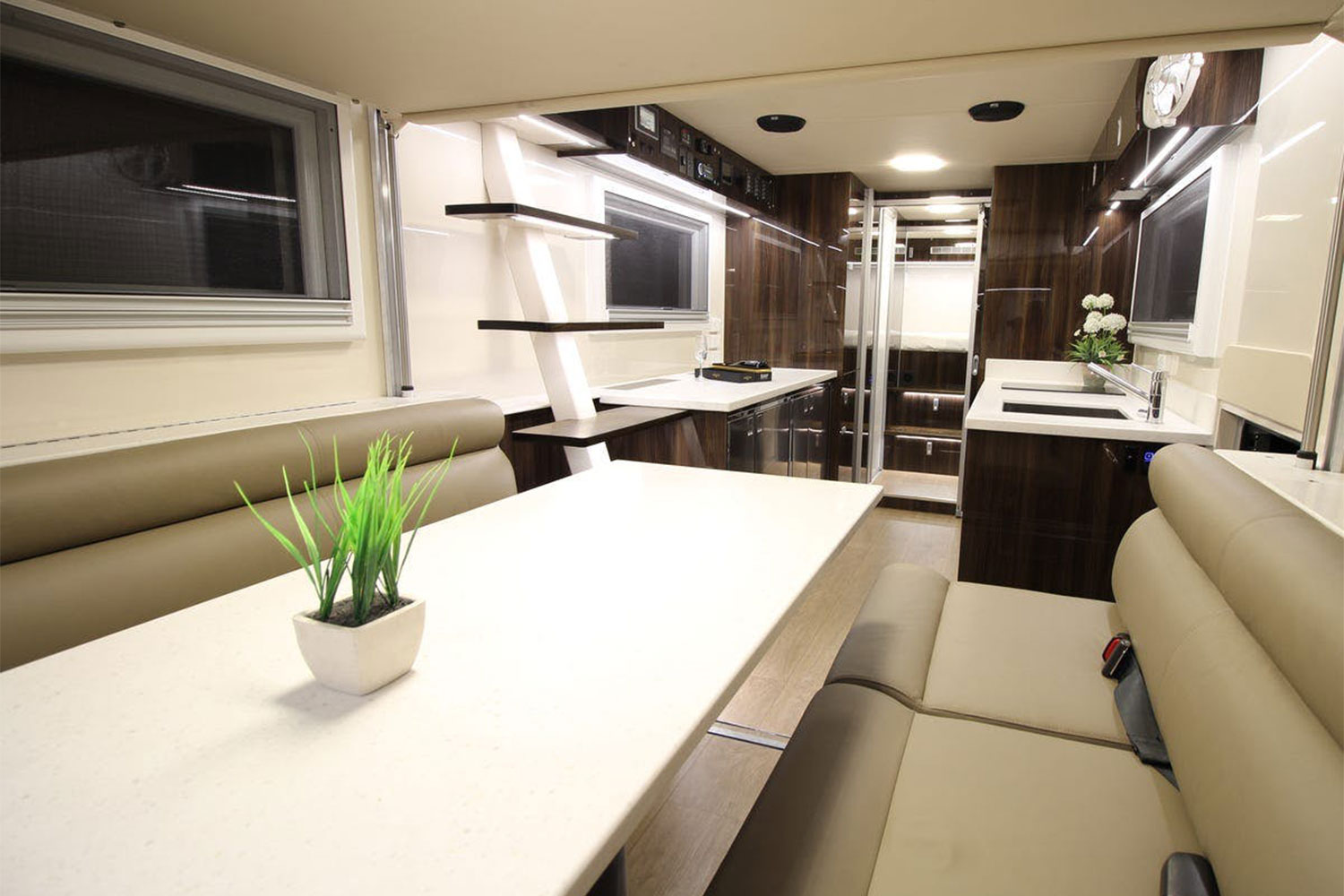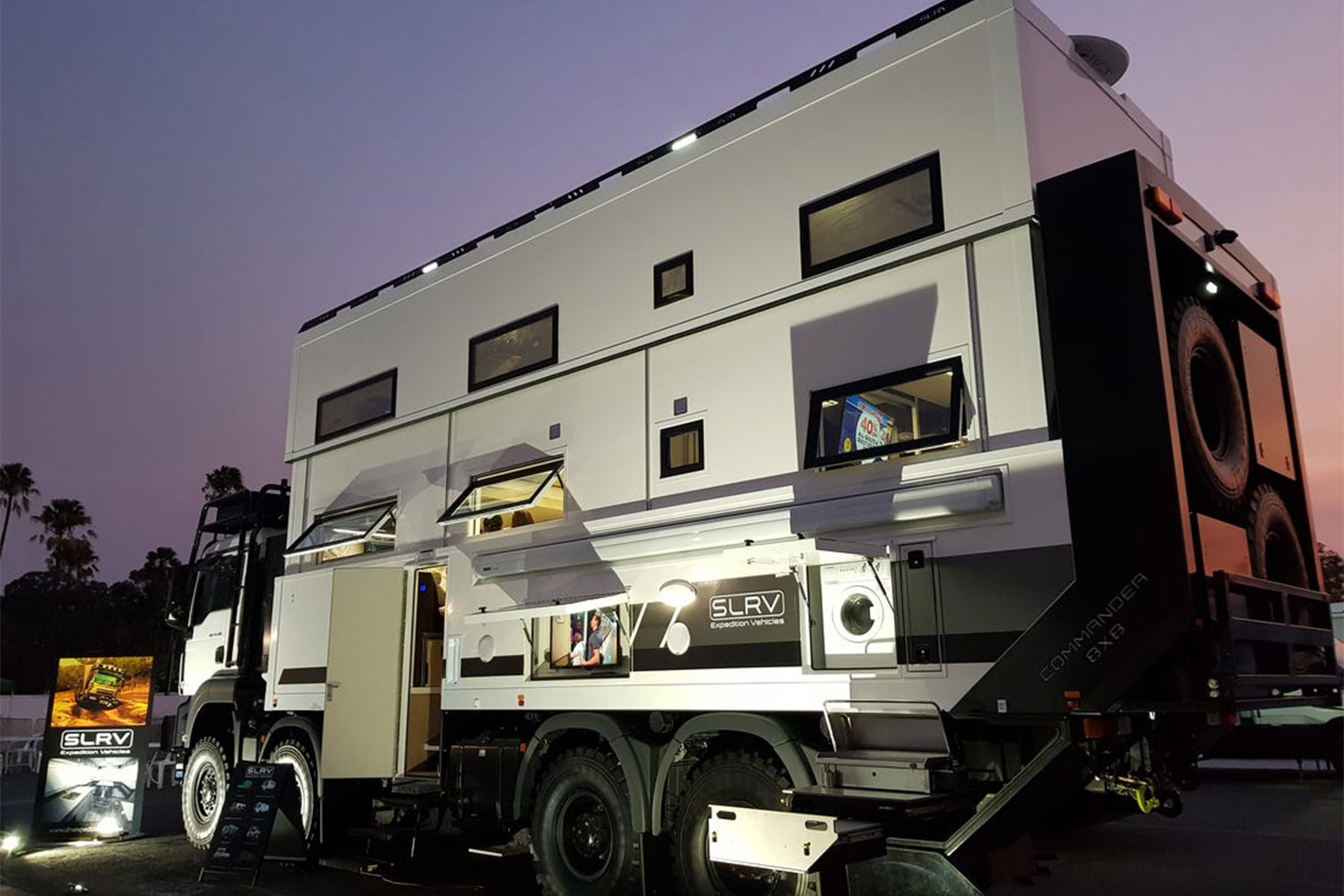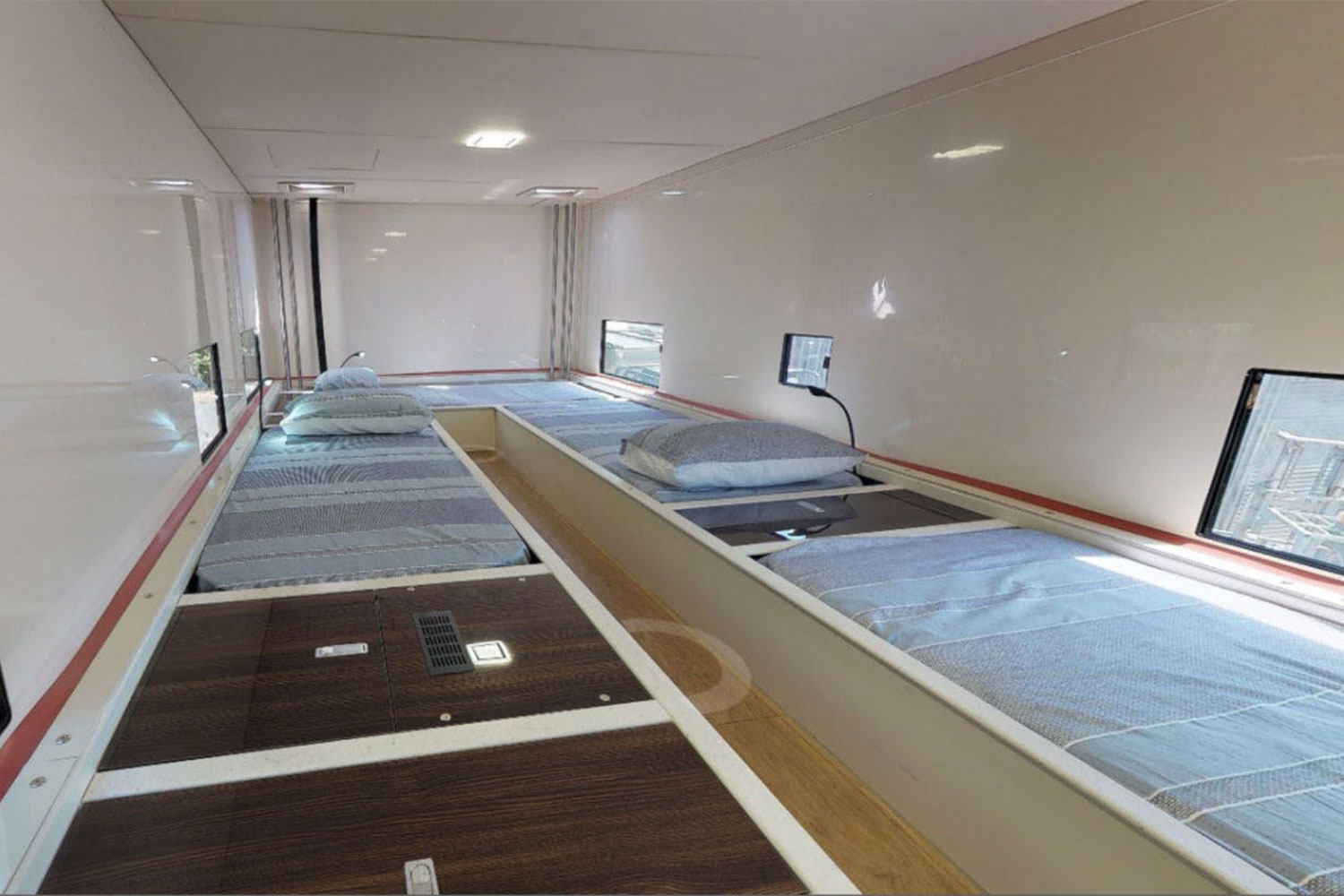Overlanding has come a long way since the days of Oregon Trail-style wagon caravans. These days, adventurous explorers can travel almost anywhere in a well-equipped converted SUV with state-of-the-art water and electronic systems designed to survive weeks, even months, off-grid. Few, however, can hold a candle to the absurd level of luxury of SLRV’s latest behemoth.
Australia-based SLRV designs and builds custom overlander rigs for ultra-adventurous one-percenters. The company’s flagship SLRV Commander 8×8 is a go-anywhere, terrain-destroying beast. What sets it apart most, however, is the flexible two-story design with enough square footage to sleep up to 10. The single-story configuration is plenty roomy with a master bedroom, a bathroom, and a full kitchen with dinette. For additional space, the power roof can also be raised to provide comfortable living quarters for six. Beyond the floor plan, the Commander 8×8 can be outfitted with optional high-end materials, including marble countertops, cushioned headliners, solid wood cabinetry, and leather lounge seating.
Of course, the world is full of luxury RVs with million-dollar price tags. Most of those, however, aren’t capable of venturing beyond the pavement. The SLRV Commander 8×8 is a beast of an overlander with legit off-roading capabilities. As the name implies, the custom rig includes an 8×8 all-wheel-drive system with a two-speed transfer case plus four differential locks and planetary axles with increased ground clearance.
Under the hood is a 480-horsepower engine good for 1,646 pound-feet of stump-pulling torque handled through a 12-speed automatic transmission. Basically, whatever you can’t drive over, you can likely drive through. The long list of high-tech onboard systems also means that, when you get where you’re going, you can take your time there. Solar-charged lithium-ion batteries with a diesel generator and a 264-gallon water capacity provide weeks or more of self-sufficiency for the whole family.
Bespoke vehicles designed to take an entire family virtually anywhere on the planet in exotic comfort rarely come cheap. While SLRV doesn’t detail official pricing on its website, we expect a fully optioned, custom rig to run north of $1.5 million. Any highly affluent traveler shopping for a 10-person RV isn’t likely to balk at such a price tag, however. For such well-heeled adventurers looking to comparison shop, it’s worth noting that there are plenty of other high-end overlander vehicles on the market.
